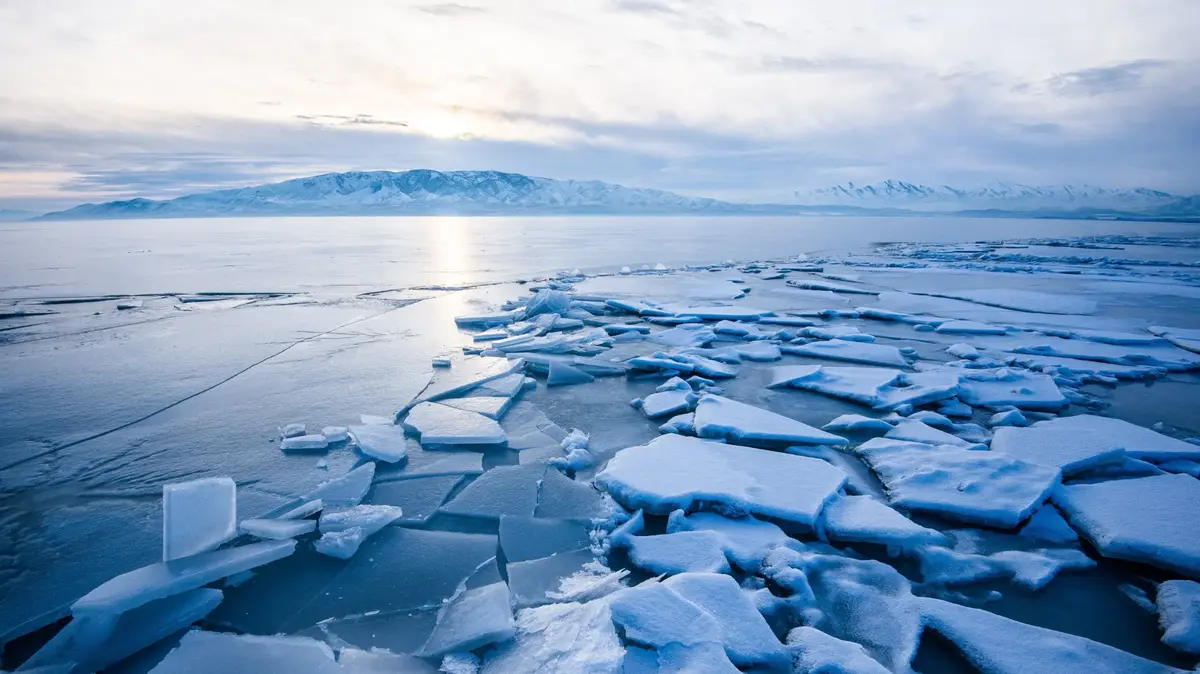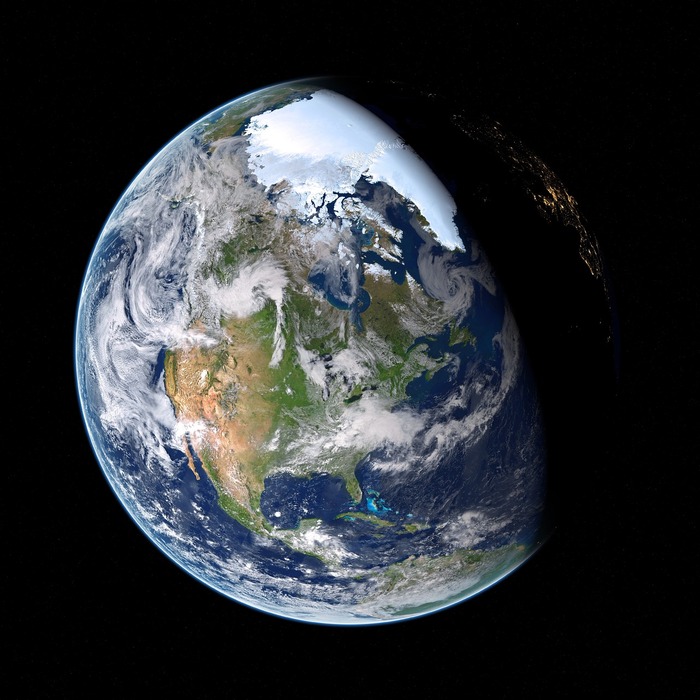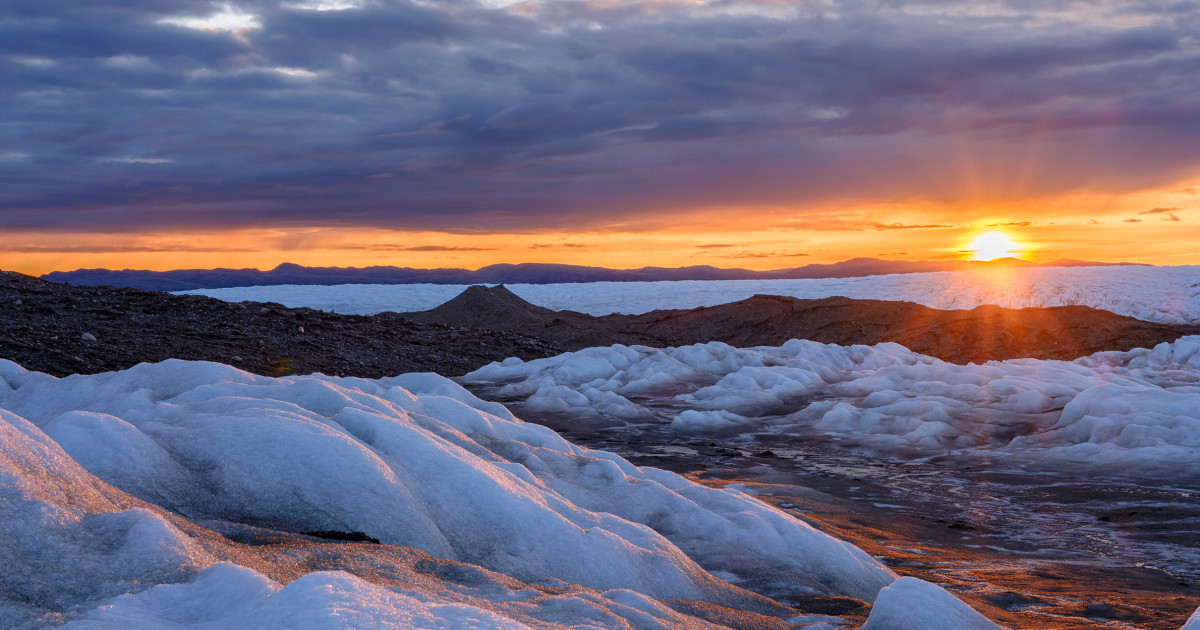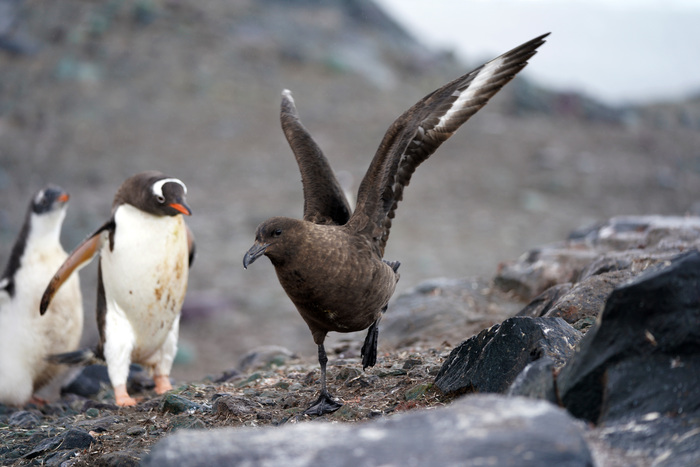Floating Laboratory in Antarctica 0:55
(CNN) -
The wild waters of the Southern Ocean are one of the largest carbon reservoirs on the planet.
The ocean absorbs about 12% of all carbon dioxide generated by humans each year, but despite its enormous importance in regulating the Earth's climate, it has hardly been studied by science.
French explorer and ecologist Jean-Louis Etienne has spent the last 10 years designing a scientific vessel capable of tackling the terrifying waves and winds found there.
The world's largest iceberg breaks off Antarctica
Its floating laboratory, called the "Polar Pod", will be 100 meters high and weigh 1,000 tons.
The structure will be towed horizontally from the eastern coast of South Africa to the powerful current that surrounds Antarctica.
It will then "flip" vertically, filling 150-ton seawater ballast tanks, a feature inspired by the US FLIP oceanographic platform.
The floating laboratory "Polar Pod" will be 100 meters high and weigh 1,000 tons.
The ship has no engine and will be propelled by the Antarctic Circumpolar Current, drifting at a speed of approximately 1 knot per hour.
The top of the structure, 20 meters above the water, is where the crew will live, sleep and work.
The submerged part will keep it stable.
"It is 80 meters below sea level, fixed in very calm waters, so it is very stable," Etienne explains to CNN.
Listen to the ocean
The plan is to "orbit" Antarctica twice in three years and collect data on the impact of humans on the Antarctic Ocean, Etienne explains.
Although the main objective will be to measure the ocean's ability to absorb carbon dioxide (CO2), the "Polar Pod" will be equipped with sensors to measure the acidity and dynamics of waves, among other things.
advertising
"This vast area of cold water that surrounds Antarctica is the largest oceanic carbon sink on the planet," he says, but we do not know how its capacity to absorb carbon dioxide changes throughout the year.
"The stability of the 'Polar Pod' will allow scientists to obtain this information."
Because the structure will be silent, it will be able to use hydrophones - underwater microphones - to record the characteristic 'acoustic signature' of different sea creatures, from krill to whales, and take a census of marine life, explains Etienne.
He also plans the ship to help calibrate satellites for NASA and the European Space Agency.
How could the thaw in Antarctica affect the world?
0:44
Six wind generators will power the sensors and the on-board laboratory, and the data will be transmitted to the researchers in real time.
The team also plans to broadcast live broadcasts and lectures from the 'Polar Pod'.
There will be eight people on board at all times: four sailors in charge of navigating (and setting sail to avoid icebergs), three scientists and a cook.
Every two months, a ship will bring supplies, a new crew, and sometimes Etienne himself.
The 74-year-old doctor and explorer has made numerous expeditions to remote polar regions.
In 1986 he dragged a sled on a solo overland trip to the North Pole and in 2010 he crossed the Arctic Ocean in a hot air balloon.
The construction of the "Polar Pod" has not yet started, but will be financed by the French government.
The French oceanographic institution Ifremer will tender the ship's construction contract.
Etienne is raising funds for a three-year expedition that he hopes will begin in 2024.
It says it cannot disclose the costs or the amount of money that has been raised to date.
In good company
The "Polar Pod" will not be the only structure floating in the Southern Ocean.
In the past six years, the Southern Ocean Carbon and Climate Observations and Modeling (SOCCOM) project has deployed 200 robotic ships with advanced sensors to measure oxygen, sunlight, chlorophyll, nitrate, and acidity.
The Saildrone 1020 approaches New Zealand after sailing around Antarctica for 196 days in 2019.
The little ships look like inflatable boats and function a bit like drifting submarines.
They park at a depth of 1,000 meters and descend to 2,000 meters every 10 days to make a complete profile to the surface and transmit the data to scientists.
Before the SOCCOM project, the Antarctic Ocean was "largely undiscovered," with only a few ship tracks traversing it, oceanographer and climate scientist Joellen Russell of the University of Arizona told CNN.
"One in eight CO2 molecules added to the atmosphere is absorbed by the ocean around Antarctica, the Southern Ocean, within a year," says Russell.
This is the ocean to be studied.
It is the critical component of the Earth's climate system.
Russell adds that the Southern Ocean has not been better studied because it is so far away and "catastrophically" dangerous.
Although robotic ships are scattered across the Southern Ocean, mooring one is challenging due to the Antarctic Circumpolar Current.
"Every time the oceanographic community has deployed a mooring in the CEC, it has been damaged or torn off in the winter," Russell explains.
Understand a major carbon pool
The Polar Pod has an important role to play in understanding how much CO2 is in the ocean, explains ocean biogeochemist Peter Landschützer of the Max Planck Institute for Meteorology in Germany.
"We know that the Southern Ocean is very important to our climate ... we also want to understand how it changes over time as the climate changes," he says.
"On the one hand, we have one of the most important carbon reservoirs and, on the other, we have very few measurements to observe it."
The ballast tanks operate on seawater and will help the "Polar Pod" to "turn" its frame and stand firm.
Other ocean research vessels have traveled around Antarctica.
In August 2019, an unmanned ship named Saildrone completed the first autonomous circumnavigation of the Southern Ocean.
Despite an iceberg encounter that destroyed some of its sensors, the Saildrone was able to collect measurements of oceanic and atmospheric carbon dioxide.
The team that created it says it plans to deploy a fleet of Saildrones to measure the exchange of carbon dioxide between the ocean and the atmosphere in the Antarctic Circumpolar Current.
According to Landschützer, the "Polar Pod" will be able to provide a more detailed circumpolar view of the carbon cycle because it has a CO2 sensor in seawater and an eddy flow system, a specialized instrument for measuring the amount of CO2 and heat. that is transferred between the atmosphere and the ocean.
Landschützer claims that measuring the exchange of CO2 between the ocean and the atmosphere, both directly and indirectly, is a great advantage.
"I don't know of any expedition [that circumnavigates the Southern Ocean] that does that."
Russell agrees: "I'm delighted, because those flow measurements from within the Antarctic Circumpolar Current are absolutely essential," she says.
"We don't have those measurements."
However, he is concerned that the ship is not robust enough to cope with hostile conditions, especially in winter, and notes that aid will be days or weeks away if it encounters a setback.
"The Pod is literally going to be in the fiercest weather on planet Earth," he says.
“I imagine that we are going to see something that we have never seen before, and that we will have people and footage, as well as measurements of the extraordinary change.
I wish they had more mobility, just in case.
Landschützer says that a better understanding of the Southern Ocean will help monitor the success of the climate goals of the Paris Agreement.
He adds that it is encouraging to see such innovative ideas to address the unique problems posed by this ocean.
"The Southern Ocean brings out the best in a scientist because of challenges," he says.
"It can't be done the way it always was, so we have to come up with something new if we want to understand it."
In addition to providing vital data, Etienne says the mission is an eye-catching way to draw attention to the devastating impact of global warming on the polar region.
"We will be the teacher of the class from far, far away," he says.
AntarcticaEnvironment


/cloudfront-eu-central-1.images.arcpublishing.com/prisa/DBT2OEOLXBGZTLYKDBM2FWSJNM.jpg)





/cloudfront-eu-central-1.images.arcpublishing.com/prisa/RDP7XNGW75D75IA7EEZLKLBVJQ.jpg)